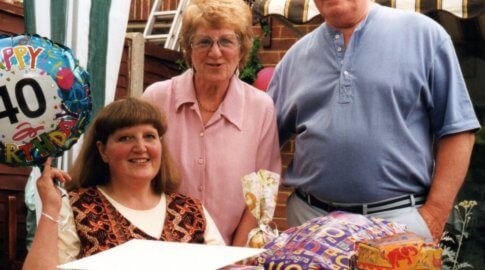Coping with diagnosis, exercise safety and the Motability scheme
‘Ask the experts’ runs in every issue of Emphasis, the PHA UK’s member magazine. If you’ve got a question you’d like answering, please email media@phauk.org.
“My wife was diagnosed with pulmonary hypertension nearly a year ago and while she seems to be coping well, I’m still struggling to get my head around it all. Does it get easier?”
Paul Sephton, former Clinical Nurse Specialist in PH, says:

A diagnosis like this is often a big shock to the whole family, and it can take a long time to adjust.
“It’s important not to be hard on yourself, and to allow yourself space and time to come to terms with what’s changed. Communication is also key; talk to each other about how you are feeling, and how you may be able to support each other.
Equipping yourself with as much knowledge as possible about the condition can also help, but make sure this information comes from trusted sources (be careful with Google!) The specialist centre treating your wife will be very happy to answer your questions, as they recognise how important it is to involve family members in care too.
You might find it helpful to talk to other spouses / partners of people with PH. At the PHA UK we have a private Facebook group exclusively for family members and loved ones. Click here to join in the chat.
We also operate a Listening Line service for anyone affected by PH, including family members. Click here for more details and do get in touch if you’d like to talk anything through. You’re definitely not on your own.”
“I keep reading that people with PH should exercise, but how do we know it’s safe? It wasn’t so long ago that we were told we shouldn’t”
Joanna Ford, Research Physiotherapist at the Golden Jubilee National Hospital, says:

There is now strong evidence to show that supervised exercise delivered by a specialist centre is safe and effective for patients who are medically stable and on optimal PH medication.
“Historically it has been common practice to advise people with PH to avoid exercise. This was due to concerns about increasing the strain on the heart, worsening the condition. However, exercise therapy can be of great benefit in many conditions affecting the heart and lungs and PH is no exception.
There is now strong evidence to show that supervised exercise delivered by a specialist centre is safe and effective for patients who are medically stable and on optimal PH medication. Research shows that individually tailored rehabilitation can deliver significant improvements in exercise capacity, breathing function, mental health and quality of life.
The benefit of being reviewed by an experienced PH physiotherapist is that exercise activity is prescribed at a safe level for you. The rehabilitation programme is tailored for people who experience shortness of breath and fatigue. Each session helps to improve your knowledge about the condition and educates you on how to exercise safely and cope better with symptoms. This gives you the tools to be able to independently manage your condition with confidence and help make lifelong changes to your activity levels.”
“I am in the process of applying for various benefits. What choice of cars would I have through the Motability scheme?”
Shaun Clayton, Director of Membership Support at the PHA UK says:

Your choice of car depends on how much you are willing to spend.
This is a question I hear a lot. Motability is a scheme that allows you to lease a car at a heavily subsidised rate if you are in receipt of the higher rate mobility component of Personal independence Payments (PIP).
Your choice of car depends on how much you are willing to spend. There are three spending structures; each one gets slightly more expensive, but each step brings a wider selection of cars.
- Cars that cost less than your mobility allowance. According to the Motablity website there are around 45 cars that cost less than your mobility allowance. That means that they’d take the agreed weekly amount from your mobility allowance but give you the remaining money back to spend/save. A key difference between this option and the next is that these cars are available at a fixed weekly amount for the whole of your lease agreement. The remainder of your allowance, including any annual increases, will be paid directly to you by your benefit payment agency. The kind of cars that are available on this option are small ones like the Peugeot 108, Kia Rio and Toyota Aygo.
- Cars that cost all of your mobility allowance. There is a larger selection of cars available to you if you go for this option. Again, according to the website there are around 135 cars that cost the same as your allowance, which means you swap the whole of your weekly mobility allowance for the car of your choice. Unlike the previous option, this payment will include any increases in your allowance during your lease. The cars available include the Citreon C3, Mini Cooper and Toyota Corolla.
- Cars that cost all of your mobility allowance and have an Advance Payment. The last optionis where you can increase your choice further by paying a one-off, non-refundable upfront payment which they call an ‘Advance Payment’. The Advance Payment covers the cost between your higher rate mobility allowance and the total cost of the lease. The kind of cars that are available on this option are the Ford Mondeo Saloon, Jeep Compass and Toyota C-HR.
You can find more information at www.motability.co.uk















